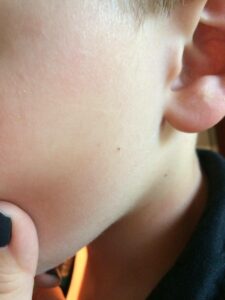Enjoying the outdoors is great for our physical, as well as mental, health especially during this difficult time due to the COVID-19 pandemic. Ticks cause Lyme Disease and are apparently quite bad this year so we need to be cautious and focus on prevention when we are enjoying the great outdoors. Chronic Lyme disease can be managed but cannot be cured. The sooner ticks are found and removed and treatment is provided the less chance of it resulting in a chronic condition. Lyme disease is often misdiagnosed as symptoms can mimic other diseases, symptoms can change and symptoms are not the same for everyone infected. This makes diagnosis and treatment very difficult. It is often diagnosed as the symptoms that it presents with, such as arthritis, fibromyalgia, chronic fatigue, Bell’s Palsy, Parkinson’s, Sjogren’s, lupus, multiple sclerosis, ALS, ADD, bipolar disorder, anxiety, meningitis or IBS. Be sure to see your doctor as soon as possible. If you suspect Lyme disease, get more than one opinion and maybe see a naturopathic doctor as well.
Here is some information on Lyme disease according to the Canadian Lyme Disease Foundation: Lyme disease is an inflammatory infection that spreads to humans through tick bites. Lyme disease is a borreliosis caused by borrelia bacteria, which commonly infects animals like birds, mice, other small rodents, and deer. Ticks pick up the bacteria by biting infected animals, and then pass it on to other animals, including human hosts. There are many strains or genospecies of borrelia that cause Lyme disease (borreliosis) in humans just as there are many strains of the flu virus that cause flu symptoms in humans, with some strains more virulent than others.
In the photo below, the two dark freckles, one on the cheek and one on the neck, are actually ticks attached to this child’s face.
3 stages of Lyme (often blurred together quite rapidly)
Stage 1: Early infection (first few days after infection)
Stage 2: Infection spreads (days to weeks following infection)
Stage 3: Chronic Lyme (days to weeks after infection if left untreated, or not properly treated, for months/years after infection)
Lyme disease is most treatable during Stage 1. As time passes, both treatment and diagnosis become more difficult. Symptoms worsen during each stage of infection, ranging from flu-like symptoms to neurological illnesses, including paralysis. With chronic Lyme disease there is not one system of the body that can be unaffected… this includes various hormone production as well.
Early treatment of Lyme disease is critical, however Lyme is very difficult to diagnose because symptoms vary from person to person. There are over 100 known symptoms of Lyme disease.
Common symptoms include:
- Developing a rash, sometimes shaped like a “bull’s eye” mark.
- Initial flu-like symptoms, such as: fever, headache, nausea, jaw pain, light sensitivity, red eyes, muscle aches and neck stiffness.
While some Lyme victims experience immediate symptoms after infection, others may have none for many months.
Massage can be very beneficial for people with Lyme disease. Massage reduces neuropathy, foot pain and joint soreness. Massage improves lymphatic drainage which helps in the removal of waste products and toxins, it relaxes muscles, reduces stress and anxiety, and improves circulation and sleep.
The best line of defence against getting Lyme Disease is prevention. You can start by avoiding areas that are prone to ticks, like the woods, or when venturing out, by using products to keep them off. Products using permethrin have been shown to be very effective when sprayed on clothing (not skin). There is also factory treated clothing available (at Mark’s). The next thing is to do tick checks on your clothes and skin when you’ve been out. Tiny ticks can be hard to find and get off clothes so using the sticky side of duct tape or a lint roller will help pull those nasty creatures off. It’s very important to regularly check for ticks on your pets as well.
Creative Wellness Solutions has had to suspend services due to the Covid-19 pandemic and are now looking forward to reopening and again providing our wonderful services.

